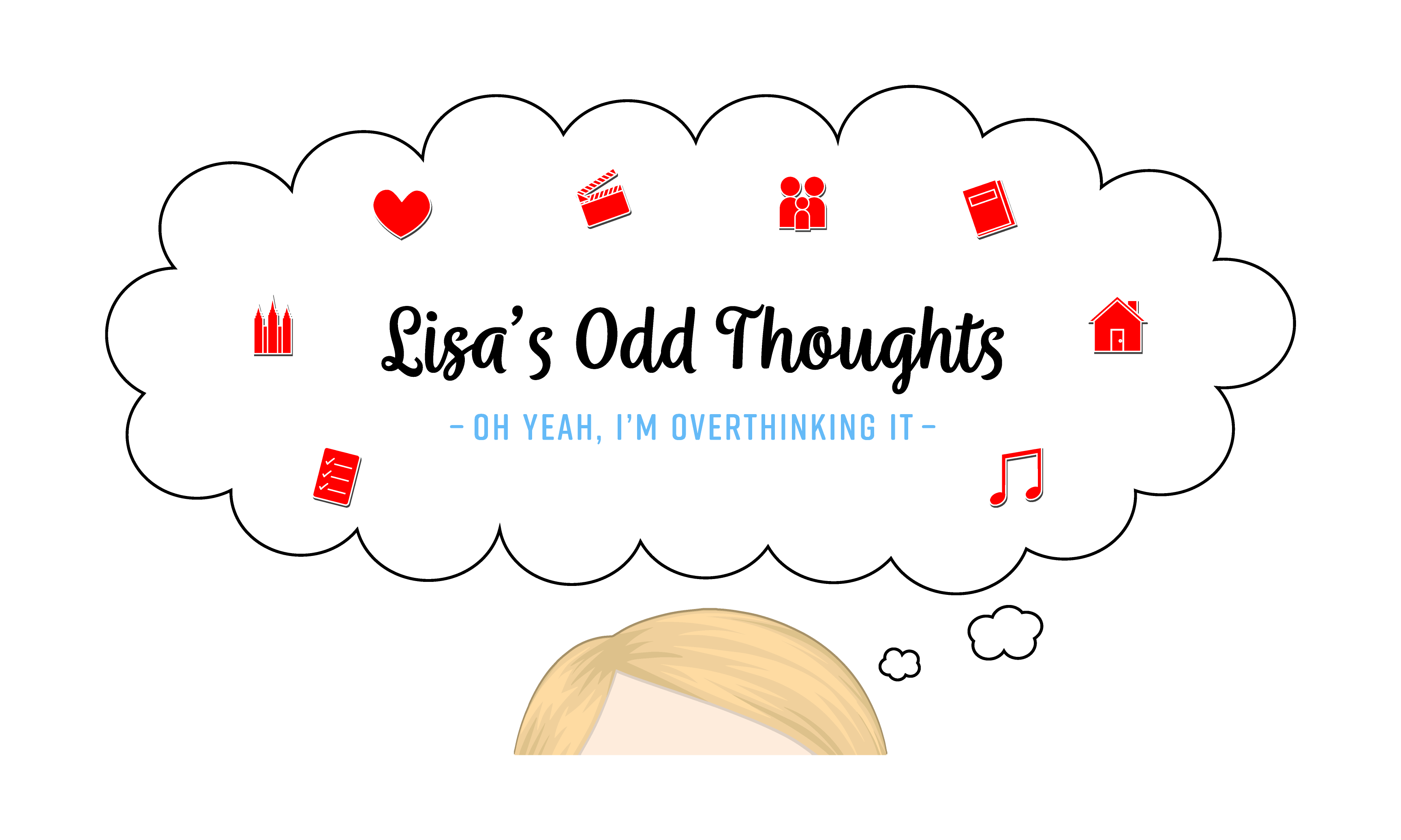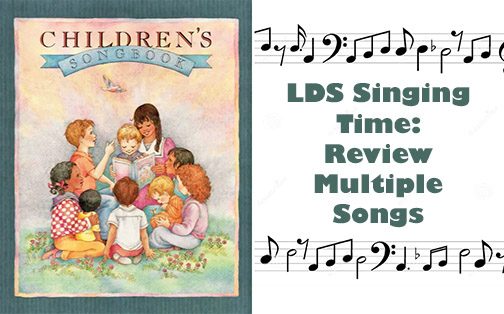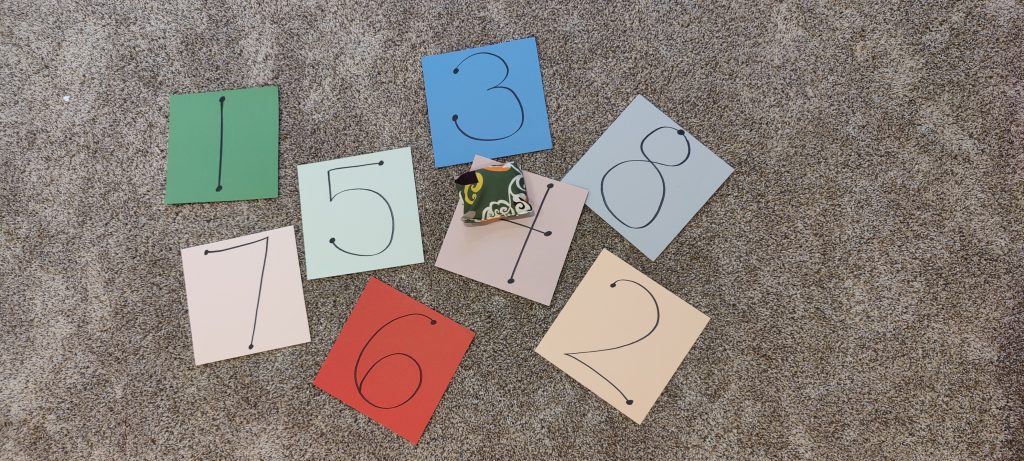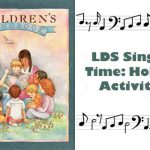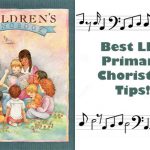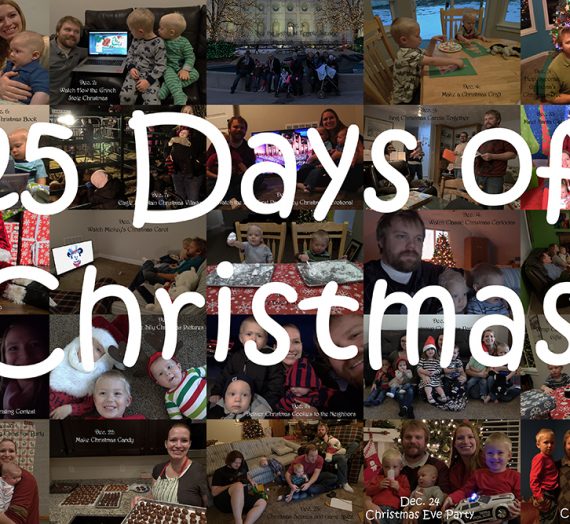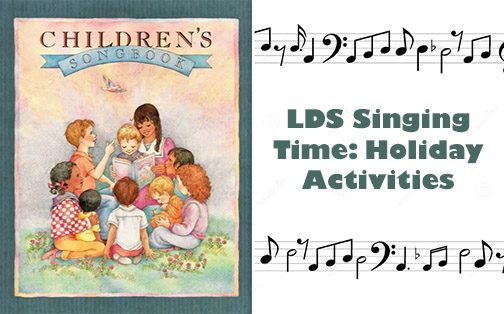This is Part 2 of the LDS Singing Time blog series. Check out the other parts of this series in the following links:
Part 1: Best Tips for Primary Choristers
Part 3: Learn and Practice a Single Song
Remember that the most important goal in Primary is to teach children the simple and foundational truths about Jesus Christ. In Singing Time we teach through music, which I absolutely love.
Traditionally, the Primary holds a Program every fall during Sacrament Meeting where they sing all the songs they’ve learned throughout the calendar year for the rest of the congregation. That means that leading up to the Program you need to practice and review all those previously-learned songs often.
There are other times when you might want to sing a wide variety of songs during Singing Time, such as at Christmas time or perhaps on a fun day when you let the kids pick their favorite songs, something like that. The following activities can be used for any of those situations.
And remember, the following activities are designed to be easy, cheap, reusable, and fun! Adapt and alter them as necessary to fit your needs.
Singing Time typically lasts twenty minutes and I found that usually gave us time to sing and review roughly six different songs. However, I always planned about eight songs into these following activities just in case we had extra time. With that in mind, you can review multiple songs with the following activities:
Bean Bag Toss
Gather a variety of colored cardstock papers. On each paper write a number. Write your own private list (and give a copy to your pianist) of which songs will correlate with which numbers. Lay these papers on the floor.
Give a child 3 bean bags to try to toss and land on a paper (for younger children, let them stand closer, but the older kids really like a challenge so put them farther back). When they hit a paper, sing the correlating song. Then remove the paper to avoid repeats, and play again with a new child. Removing the numbered papers also makes the game harder and more exciting as they kids have fewer targets to hit.
Choose an Object
This is so versatile! You can use different objects, place them around the room differently, or anything you like. Basically attach a song to each object (use Post-Its to write songs on and then stick it to your object, so you don’t permanently write on your objects; this means that you can reuse your same objects later with different songs), have a child choose an object, and then sing the corresponding song. Repeat until all the objects have been chosen.
Objects can be just about anything! This was when I often pulled out my missionary toys or Book of Mormon characters, which the kids always loved. Or the pocket-sized pictures of Jesus were great for this too.
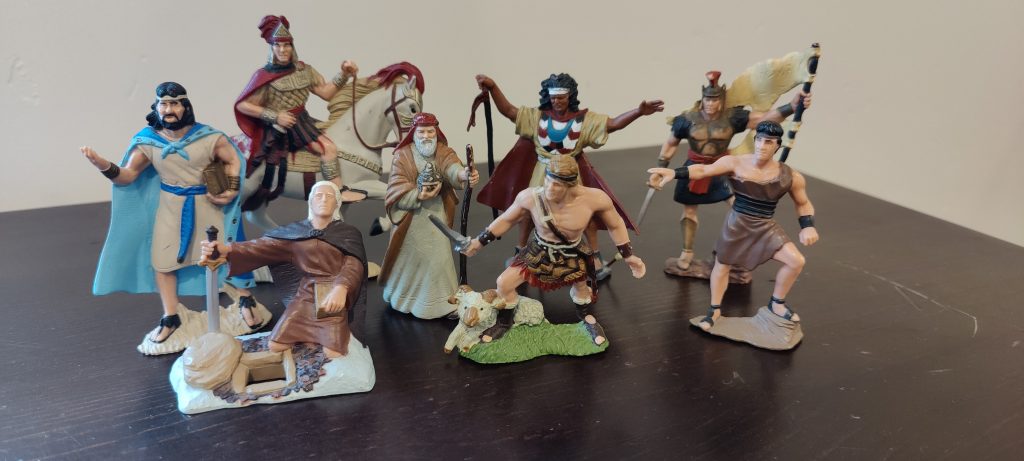
You can also place the objects in a variety of places. You can simply line them up on the front table or on the floor. You can hide them around the room. Or, for pictures and flat things, you can tape them underneath chairs beforehand for kids to find.
This activity is also really easy to make into a holiday activity. Write your chosen songs on slips of paper and put them into Easter Eggs to hide around the room, or drop Christmas ornaments into a stocking to be drawn out. Or use paper cutouts for just about any holiday out there with an attached Post-It and song.
Secret Message (Choose an Object Variation)
Write a secret message. You could write a Gospel-themed message about that month’s theme, or my Primary really enjoyed when I wrote a personal note about myself to announce something to them such as, “Today is Sister Cunningham’s birthday!” and “Sister Cunningham is having a baby!” which I used to tell them I was pregnant with Baby #2.
Variation #1: Write the message on a poster board and cut it into puzzle pieces. Label the back of the pieces with a song to sing. Hide the pieces around the room. When the child picks a puzzle piece, they must also tape it on the board and arrange it correctly with the other pieces to reveal the secret message. Then, of course, sing the chosen song.
(When I announced my second pregnancy with this game, I purposely withheld the final piece that said “baby” on it, so they put together the message, “Sister Cunningham is having a…” and I revealed the final piece at the very end, just to build up the suspense.)
Variation #2: Write the message on the board in secret symbols or numbers. Then write the code for the symbols on index cards, which also correspond to a song. When the child picks a card, they must use that information to decode a letter in your message. Sing the corresponding song, and continue until all the symbols have been decoded.
For example, write “5 7 3 2 3” on the board. Then on your index cards, write one of the following, that also corresponds with a song to sing:
5=J
7=E
3=S
2=U
This simple example would spell out the word “Jesus” as your secret message, but you can do something longer by adding more numbers and letters.
Favorites Day (Choose an Object Variation)
This activity is meant to be fun and not specifically for reviewing Program songs, but any song in the entire songbook.
But please, okay this activity with your pianist first. During my time as Chorister I worked with two pianists; one was very experienced and could easily play anything on the fly, so I was free to improvise as much as I wanted and she never even broke a sweat. My second pianist, however, was a beginner and couldn’t play something she hadn’t practiced beforehand, so this kind of activity with randomly-selected songs would have been a big no-no for her (but bless her heart because she worked so hard to be able to play for Primary!).
Label your chosen objects with the following labels:
- Your Favorite (write multiple labels with this one)
- Your Teacher’s Favorite
- The Person Sitting on Your Left/Right’s Favorite
- The Pianist’s Favorite
- The Primary President’s Favorite
Pick a child and have them choose an object, then ask the directed person their favorite song and have fun singing it! Continue until all the objects have been chosen.
Pro Tip: at the beginning of this activity, instruct everyone to think of their favorite Primary song and to save it in their head. It saves time of kids sitting there thinking for ages and ages just going, “Uh, uh, uh, uh…” when asked what their favorite song is.
Especially with younger kids who might need help choosing a favorite, make a few suggestions of popular songs to give them some helpful reminders (“Popcorn Popping,” “Do As I’m Doing,” “Head, Shoulders, Knees, and Toes”, etc.).
Snowball Fight (A Favorites Day Variation)
Again, check with your pianist before you do this activity as you’ll be spontaneously skipping through the songbook and be sure he/she is comfortable with that.
Give each child a small sheet of blank, white paper and have them write on it their favorite song (have teachers and other adults help smaller kids as needed). Then crumple up your paper into a “snowball.”
On the count of three, everyone throw your “snowball” at the Chorister. Then the Chorister (or a helper child, if you’d rather choose that way) will pick a snowball, unwrinkle it, read the requested song, and everyone will sing it together.
For a less messy and more challenging variation, you could put an open basket or bin on the font table and tell kids that you’ll only choose snowballs that are successfully thrown into the basket. Let kids re-gather and rethrow their snowballs after each song is sung.
Since this is a “snowball fight,” I suggest doing this activity during the winter.
Letters and Numbers Match
Write out various letters and numbers. They can be written on the board or written on index cards/cardstock and placed on the floor or table.
Each letter will correspond to a song to sing and each number will tell a silly way to sing it. Pick two children, one to pick a letter an one to pick a number (erase it off the board once it’s been chosen or remove the card). Sing the chosen song in the chosen silly way.

Note: while Primary is supposed to be fun, remember that you’re still in church and singing about Jesus Christ, so make sure reverent and sacred songs stay respectful and know that some won’t be appropriate to sing in some kinds of silly ways. The following silly ideas are best for wiggle songs or fun songs. Use your best judgement.
Silly ways to sing may include:
- Boys only
- Girls only
- Clap with each word (or clap in a silly way, like in a circle, over your head, or behind your back)
- Stomp with each word
- Do the wave on a special word (pick a common or significant word from the song)
- Do the “Head, Shoulders, Knees, and Toes” actions really fast on a special word
- Turn out the lights and sing in the dark
- Stand up
- Sing acapella; no piano
- Clap your elbows with each word (put your hands behind your head as if you’re doing a sit-up, then “clap” your elbows together; kids think this is hilarious)
- Stand up then sit down on a special word
- Sing loud or soft; have the child who chose this option stand at the front of the room and direct the volume with his/her hand. Raise it high to sing loud, hold it low to sing softly
So, for example, Helper #1 might select the song, “Nephi’s Courage.” Then Helper #2 would pick to sing this song while standing up. Have all the kids stand up, sing the song, and then remove that song and that action from the available choices. Repeat until all the songs have been sung.
Tic Tac Toe
Choose nine songs (or verses) to review. Write a line from each song on an index card with one word missing, making a fill-in-the-blank sentence. Draw a Tic Tac Toe grid on the board and magnet (or tape) each index card face down into one of the 9 spaces (you can prepare this game on a poster board beforehand if you prefer).
Divide the room in half, Team X and Team O. Take turns. On a team’s turn, have a player from that team come to the front and choose a square where they’d like to put their team’s mark. Pull down the chosen card and read them the fill-in-the-blank message. If the player correctly guesses the missing word, mark that square with their team’s mark.
If that player doesn’t know the answer or guesses incorrectly, give the opposite team the chance to steal and put their mark in that space instead.
Sing the chosen song, and then keep playing until someone wins three in a row.
Note: some games, like this one, need to be adapted for smaller kids. In many LDS wards, Primary is typically divided into Junior Primary for kids ages 3-7 and Senior Primary ages 8-11 (although this varies depending on the size of the ward). If this is the case, your Junior Primary kids might need help with this game and I let their entire team help guess the missing word to fill in the blank. But the older kids love a challenge and I make the individual player guess the answer all alone.
Name That Tune
Write a private list of the songs you want to practice and the order you want to practice them in. Give a copy of this list to your pianist.
Divide the room into two teams. Have each team send one player to the front and stand at the table where a dinger bell is sitting between them.
Have the pianist play the first few notes of a song and then stop. Whichever player recognizes the song will ding the bell and guess the song. If he/she is right, their team gets a point. If he/she is wrong, the other player gets a chance to guess and steal that point. If neither player is right, have the pianist play it again adding one more note, then one more, then one more, and so on until the song is correctly guessed. Then sing the whole song. Repeat until all the songs are sung.
Note: this is a game where it’s necessary to choose evenly-matched and closely-aged players against each other.
A Harder Variation: before the pianist plays the notes, have the players each roll a dice. The first roll will indicate how many notes the pianist should play (so if they roll a six then it it should be easy to guess, but if they roll a one then guessing will be really hard). The second dice roll will indicate the number of points awarded to the winner of that round.
Hum That Tune
Download your chosen songs onto your preferred device (phone, laptop, tablet, etc.). Take it and headphones to Primary.
Choose a child to be the Hummer. Bring that child to the front of the room, put the headphones on them, and play a song for them (don’t tell them or anyone else the song). Once the Hummer recognizes the song, have them hum it out loud (don’t sing the words, just hum) for everyone else to guess. Once the song is correctly guessed, stop the recording and all sing the song together normally.
This is a great quiet game because everyone should be listening very carefully to the Hummer.
You can also divide the room into teams and play this game against each other. Give each team roughly thirty seconds (less to make it more challenging for older children) to guess the correct the hummed song in order to get a point. If they guess wrong or don’t know the correct answer, let the other team guess and steal that point.
Repeat with new Hummers and new songs until all the songs have been correctly guessed and sung.
Note from a germaphobe: you might be wary of this game due to sharing the headphones. I get it. Personally I prefer small earbuds for my own use, but I wouldn’t dream of using those for this kind of game due to not wanting to stick them inside multiple yucky kids’ ears. Use big, exterior headphones and sanitize them afterwards with a Clorox wipe, or even wipe them after every single use if you want to.
Sing or Dare
Get two paper cups (or any other kind of container) and label one “Sing” and the other “Dare.”
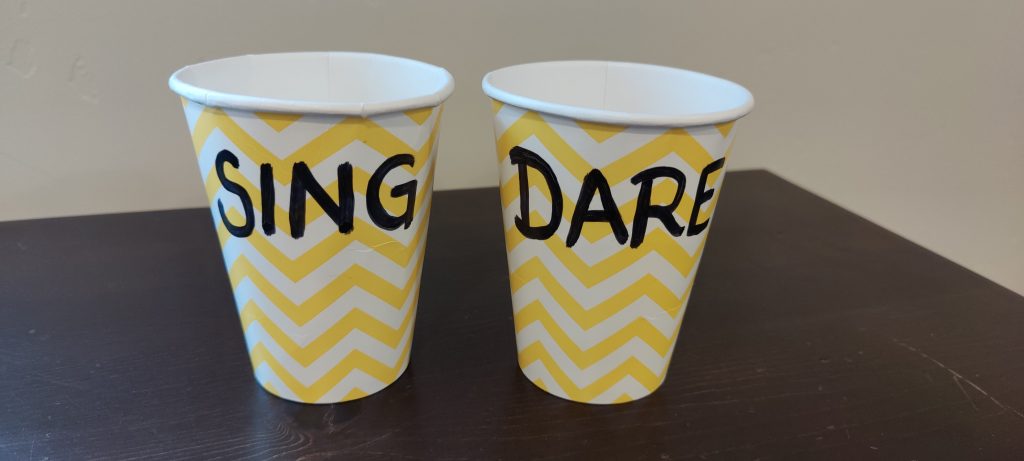
On slips of paper, write out the songs you want to sing and put them in the “Sing” cup. Likewise, write out dares that correspond to a specific song and put them in the “Dare” cup. Dares can include:
- Everyone else sing [song] while you sing the chorus as a solo
- Conduct [song] for everyone to sing (and let the Chorister go sit down for a break!)
- Hold the flipcharts for [song] for everyone to see while singing
- Answer a question about [song] (such as the meaning of a significant word you taught, answer a fill-in-the-blank statement, or teach briefly the meaning of the song)
Dares can also include silly ways to sing songs.
Pick a child to come up and draw from either the Sing or the Dark cups. If they choose to draw from the Sing cup, sing that song normally. If they draw from the Dare cup, they must follow the directions and complete the dare.
Note: before starting, remind kids that the dares might be difficult (such as singing the chorus as a solo). Don’t embarrass anyone by forcing them to do a dare that they aren’t comfortable with, so remind kids that they have to be extra brave to draw a dare.
This game is great for the attention hogs and class clowns (every Primary has some, I know!) to get some spotlight, but it’s also a good way to include the shy kids too. Remember that super quiet girl I told you about in my previous post? This was an activity where she was able to participate and choose a song from the “Sing” cup without any worries about having to answer a question or do something silly in front of everyone. Everybody wins!
Jeopardy
Make a Jeopardy board with color-coded index cards. Write the numbers 100, 200, and 300 on individual cards, one for each colored category. Arrange these cards taped to a poster board or the white/blackboard in the Primary room to resemble Jeopardy. Label the tops of your color-coded columns with the category names.
Categories can include:
- What Does That Word Mean? (for songs with big or significant words that you’ve taught the children. One year I taught them the hymn “Praise to the Man” and we learned lots of hard words like “communed,” “anointed,” “ascended,” and so on)
- Fill in the Blank (write a line from the song with a word missing and the player has to fill in the blank)
- What’s the Action? (I often taught songs using sign language; for this category, ask a player to show you the ASL sign for a certain word in the song)
- What’s the Next Word? (start singing/saying a phrase from the song but stop and the player must continue with the next correct word)
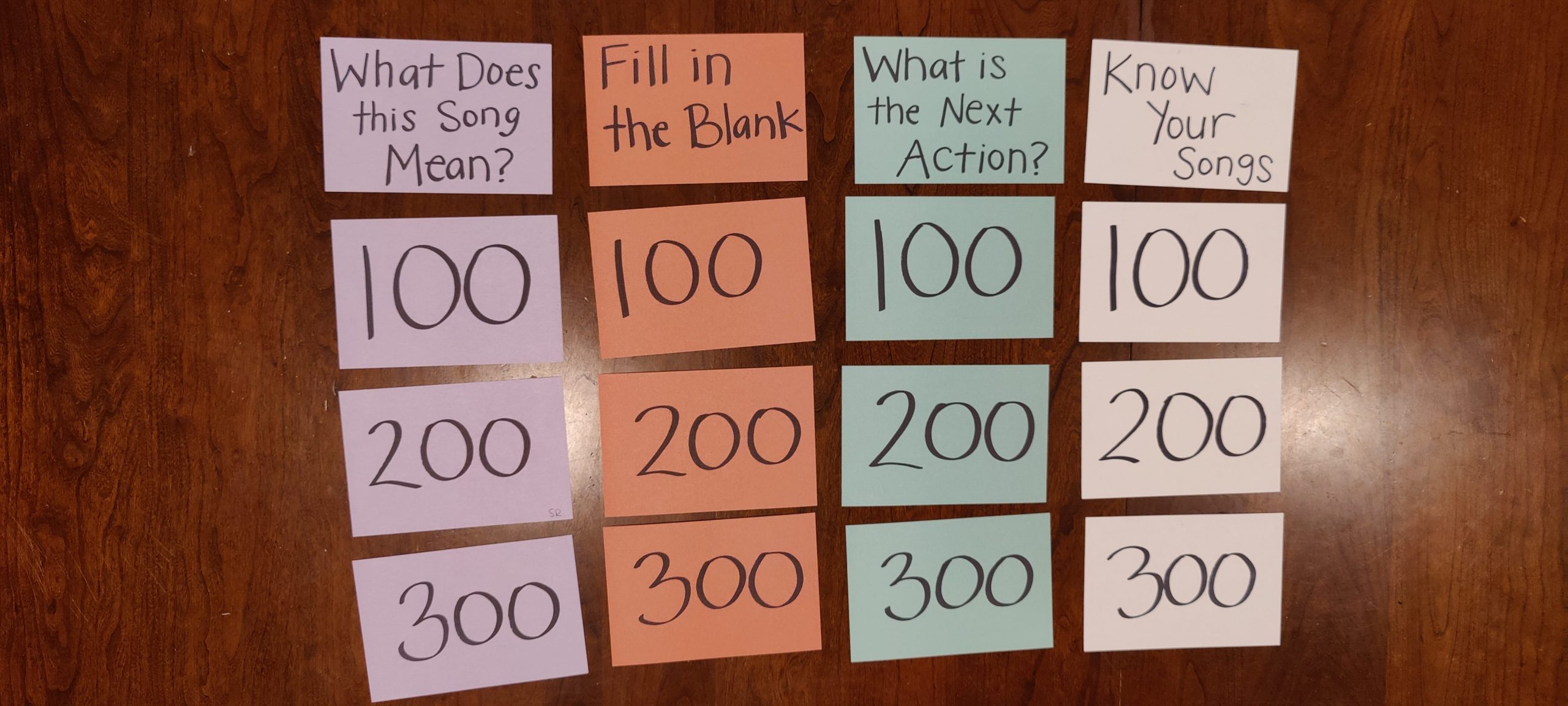
Write corresponding questions for each of these categories. 100s questions should be easy gradually working up to the harder 500s questions.
Pro Tip: write your questions on a separate piece of paper that you can refer to, not on the backs of the cards themselves. This way, you can save and reuse your Jeopardy board and cards to play the game again next year. Don’t reinvent the wheel, remember!
Divide the room into two teams. Take turns. Choose a player from a team to come up, choose a question, and try to answer it. If he/she answers correctly, give that team the correct amount of points. If he/she answers incorrectly, give the opposing team the chance to answer correctly and steal those points. Then sing the corresponding song.
Keep playing until either your time runs out (this is a long game, so this is likely) or until you’ve done every question on the board.
Note: younger children might struggle with this game, so I usually let the little ones call on their teammates to help them. But for the older ones I’m much more harsh and make them answer alone.
Song Title Riddles
Note: this activity is best suited for Senior Primary only.
Get one index card for each review song and write out a Catch-Phrase-style description of the song title. That means that you must describe the song without using any words in the title itself. Examples include:
- “God feels strong, positive emotion toward myself” = My Heavenly Father Loves Me
- “Perhaps Jesus Christ would be upright on his legs next to my person” = If the Savior Stood Beside Me
- “My person is the offspring of Heavenly Father” = I am a Child of God
- “The time of a dark yellow season after winter and before summer” = On a Golden Springtime
Explain to the kids that you’ve turned these song titles into silly riddles and it’s their job to solve the clues and figure out the correct song to sing.
Pass the cards out to various kids/classes (have enough for one for each class or one for each row). Give them a minute to work together with their class/row to read and think about their riddle (have teachers help with the reading part as necessary).
Ask by raise of hand who has solved their riddle. Have that child stand up, read their riddle, and then announce the correct song. Sing that song and then continue until all the riddles have been solved.
Check Out More Singing Time Activities!
These have been activities to review multiple songs. Check out my other posts in this series for other Singing Time ideas:
Part 1: Best Tips for Primary Choristers
